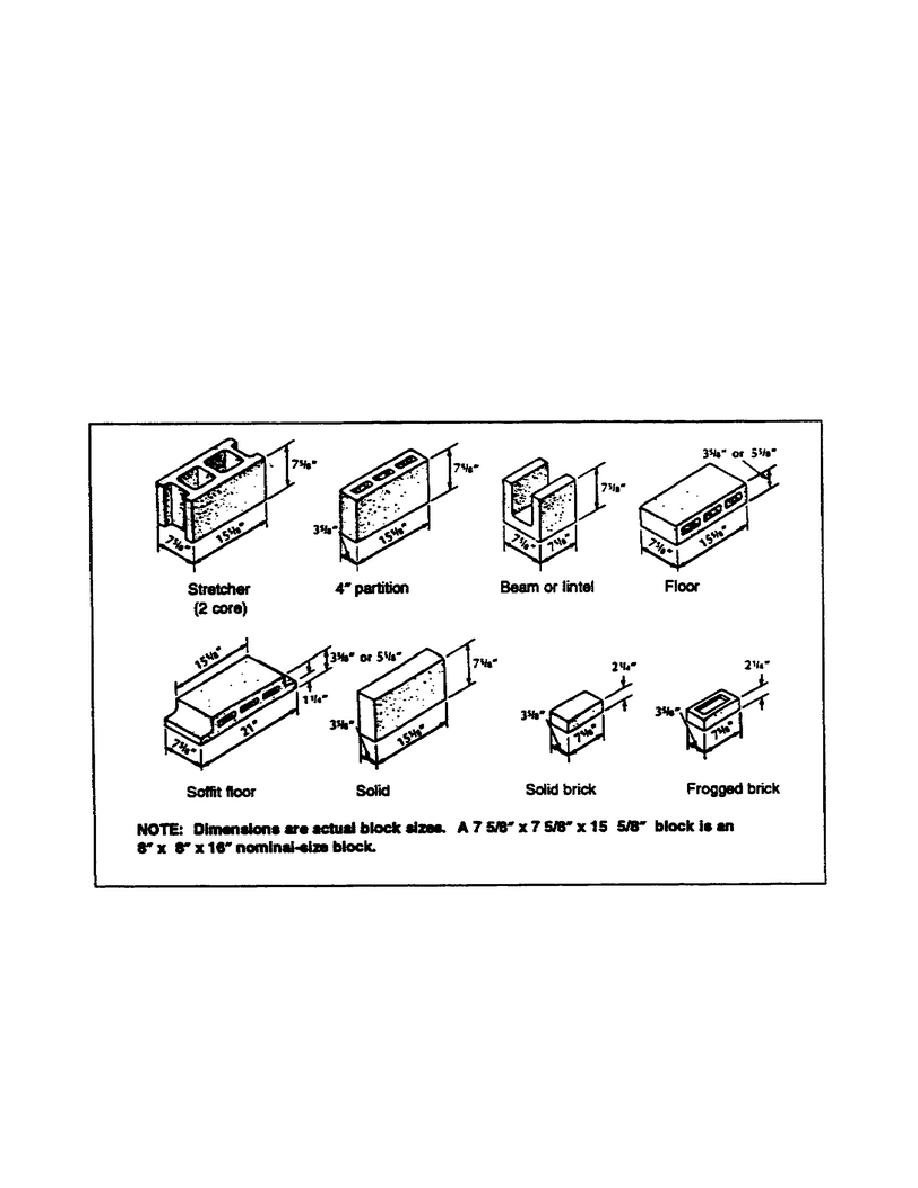
PART B - CONCRETE BLOCKS
Buildings are constructed with various sizes and kinds of concrete blocks that can be hollow or solid.
The different types of blocks are made with heavyweight or lightweight materials and are normally
referred to as such.
2-3. Actual and Nominal Sizes. Concrete blocks come in specific sizes. The 3/8-inch mortar joint has
been adopted as the standard-size joint for joining blocks. The actual dimensions of the block are
fractional; when combined with a 3/8-inch mortar joint, the dimensions will come out even in inches or
nominal sizes. Therefore, a 15 5/8-inch stretcher block with a 3/8-inch mortar joint equals 16 inches.
The same explanation holds true for heights and widths.
2-4. Typical Sizes and Shapes. Blocks come in both heavyweight and lightweight materials with full-
and half-length sizes. The three-core block can also be obtained as two-core blocks. Figure 2-1, pages
2-3 and 2-4, illustrates some of the typical sizes and shapes of concrete blocks.
Figure 2-1. Types of concrete blocks
2-5. Types. Concrete blocks come in several different types.
a. Stretcher. A stretcher block is the most commonly used block in construction. It is laid with its
length parallel to the face of the wall.
2-3
EN5157


 Previous Page
Previous Page
